How To Defend Out Of Bounds
Situations and Plays
I have had discussions with coaches who say, "When the ball is out-of-bounds under the basket, we'll just go to a 2-3 zone." Those are guys who I would love to schedule. I don't know many out-of-bounds plays that cannot take advantage of a 2-3 zone defense.
A major thrust of our out-of-bounds plays is the fact that we want to score on every play. We do not practice offense not to score and out-of-bounds plays are a part of our offense. If we can score one basket per half off of an out-of-bounds play, we feel that we have a great advantage over our opponent. Just think what position your team would be in if you had an extra 4, 5 or 6 points (depending on the shots you get) from 1 basket per half. That does not take into account the possibility of foul shots as well.
Conversely, if your intention is to score out of an out-of-bounds play, why would you not make it a priority to prevent your opponent from scoring on them?
Look at the big picture. Teams with poor won-loss records usually also have negative point differential ratios. When you look at those statistics, you realize that a huge majority of teams with bad records have point differentials that are less than 2 possessions. If your team has a differential of up to -6 ppg, that equals 2 possessions. So as you are evaluating how to make up those 6 points by improving your foul shooting, altering offenses, etc., see how many times you have allowed your opponent to score on an out-of-bounds play. Make that adjustment, you might see some games turn around.
When we defend out-of-bounds, like everything else, we have a few simple rules.
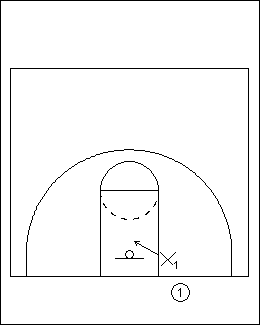
We position the ball defender such that our opponent cannot make a direct pass to the basket from out of bounds.
Here, X1 is guarding the ball out of bounds. He steps back at an angle to prevent the ball being passed directly under the basket.
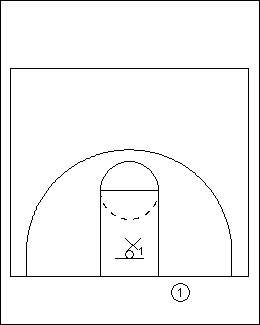

Many successful out-of-bounds plays have a screen-the-screener action. At least one of those screens comes from the baseline up. We switch all the screens that originate from the baseline. This helps us defend multiple screens and defend the basket. It also helps us accomplish one of our basic defensive principles where we like to keep our post defenders in the post and our perimeter defenders on the perimeter.
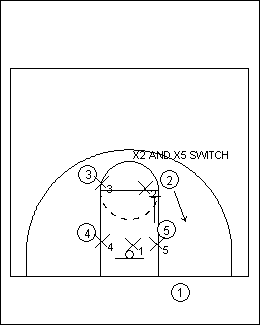
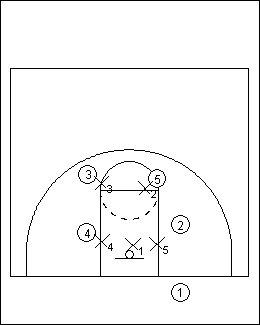
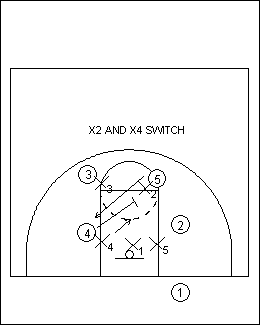
X4 and X2 Switch.
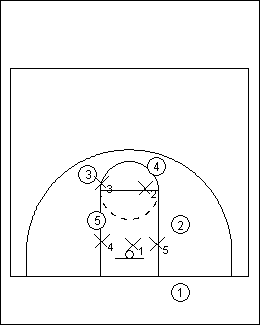
I think that when the ball is anywhere else on the perimeter, we can let out basic defensive principles take over but when the opponent tries to pin the wing defender for a corner shot, it is a very difficult situation to defend. I like to switch out with the ball defender. He is rarely screened and it is easy to get to the ball without exposing the basket.
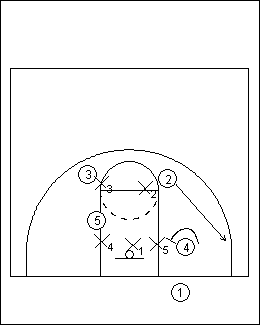
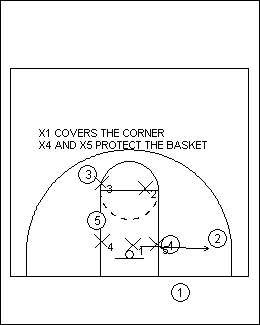
The middle is protected by X4 and X5.
Each out-of-bounds play takes its own adjustments, however, I have had great success in preventing score on inbound plays by starting with these rules as a basis.
Recommended eBooks:

|
60 Baseline Out of Bounds (BLOB) Scoring Plays In this eBook you will get 60 inbound "scoring plays." The purpose of each play is to SCORE! We have compiled the best plays and advice we could find to help you score more points and get the advantage in BLOB situations. The baseline out of bounds play is a play that happens a lot in a game. By being really good at both executing and defending BLOB plays, it can literally result in a 16 point swing for your team! (more info) |
To view coaching products from Don Kelbick, go to Don Kelbick Products.
For more information on Don Kelbick, go to www.DonKelbickBasketball.com.
FREE BONUS PDF
The Best 11 Defense Drills
What do you think? Let us know by leaving your comments, suggestions, and questions...
|
||||||||||||||||||||||||||||||||||||



 Facebook (145k Followers)
Facebook (145k Followers) YouTube (152k Subscribers)
YouTube (152k Subscribers) Twitter (33k Followers)
Twitter (33k Followers) Q&A Forum
Q&A Forum Podcasts
Podcasts